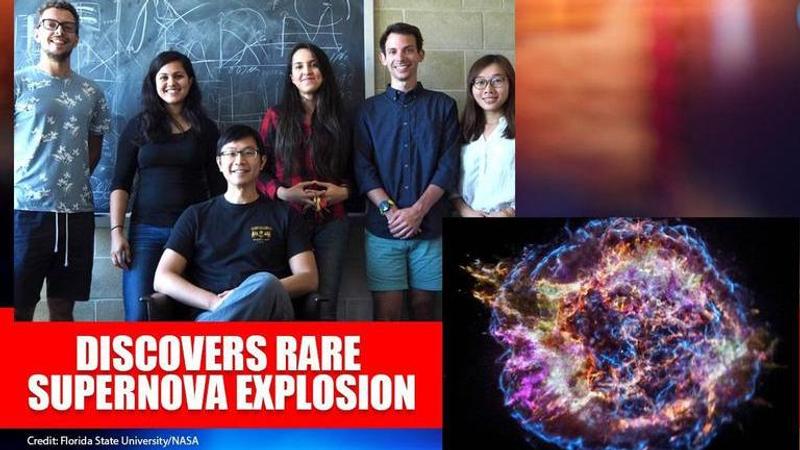Published 11:30 IST, September 11th 2020
Florida State University researchers discover ‘unique’ supernova explosion
A 37-member international research team from Florida State University found an unusual supernova explosion from the unique star known as “supernova LSQ14fmg”.

Advertisement
Scientists from Florida State University have discovered a rare supernova explosion one-hundred million light-years away from Earth. In a new study published in The Astrophysical Journal on September 10, a 37-member international research team found an unusual supernova explosion from the unique star known as the “supernova LSQ14fmg”. The research was led by Florida State University Professor of Physics Eric Hsiao. Researchers, for the first time, were able to trace the origins of the group of supernovae and the origin of the solitary star that caused it.
[First Moments of a Dying Star captured on Kepler space telescope. Credit: NASA]
In a release published on the university’s website, the researchers explained that this supernova was different since its characteristics were unique. The supernova gets brighter extremely slowly, and is also one of the brightest explosions in its class — unlike any other, the researchers found. Type Ia supernova, the exploding star involved in the formation of the supernova LSQ14fmg has been found to be the member of the star cluster known as the “super-Chandrasekhar”. The supernova was found to have been caused by the massive explosion of the low masses starts from the cluster. These stars, according to the researchers, are so powerful and bright that the team could observe them on Earth despite situated on a very “unobservable” realm of the universe.
“This was a truly unique and strange event, and our explanation for it is equally interesting,” said Hsiao, the paper’s lead author in the release.
“Seeing how the observation of this interesting event agrees with the theory is very exciting,” said Jing Lu, an FSU doctoral candidate and a co-author of the paper.
Discovery of Type Ia supernovae is crucial for scientists as it reveals mysteries about the cosmic dark matter. While little has been known about the dark matter that causes the expansion in the universe, scientists found key details about supernova which were only previously known to be thermonuclear explosions of white dwarf stars. The team observed that the Type Ia supernova rises and falls over the course of weeks, and it was powered by the radioactive decay of nickel. Therefore, as the nickel becomes more exposed, the supernova would turn brighter and vice versa. In the release, scientists revealed that when this supernova eventually cooled down, nickel was reduced to cobalt and iron which produced carbon monoxide.
[Dark tangled supernova remnant, created after a massive star ended its life in a cataclysmic explosion and threw its constituent material out into surrounding space. Credit: NASA]
[The still unraveling remains of a supernova. The bright ring formed consists of material ejected from the dying star before it detonated. The ring is being lit up by the explosion's shock wave. Credits: ESA/Hubble/ NASA]
Asymptotic giant branch (AGB) star
As observed from the data accumulated from telescopes in Chile and Spain, scientists concluded that— the supernova was exploding inside an asymptotic giant branch (AGB) star and was carrying out the process to become a planetary nebula. Scientists concluded that the supernova explosion was caused by the explosion was triggered by the merger of the core of the AGB star and another white dwarf star which resulted in massive mass losses which created a ring around the star.
“This is the first strong observational proof that a Type Ia supernova can explode in a post-AGB or proto-planetary-nebula system and is an important step in understanding the origins of Type Ia supernovae,” Hsiao said.
After it exploded, the ring material appeared as seen in planetary nebulae due to extensive lightning. “These supernovae can be particularly troublesome because they can mix into the sample of normal supernovae used to study dark energy. This research gives us a better understanding of the possible origins of Type Ia supernovae and will help to improve future dark energy research.”
11:30 IST, September 11th 2020






